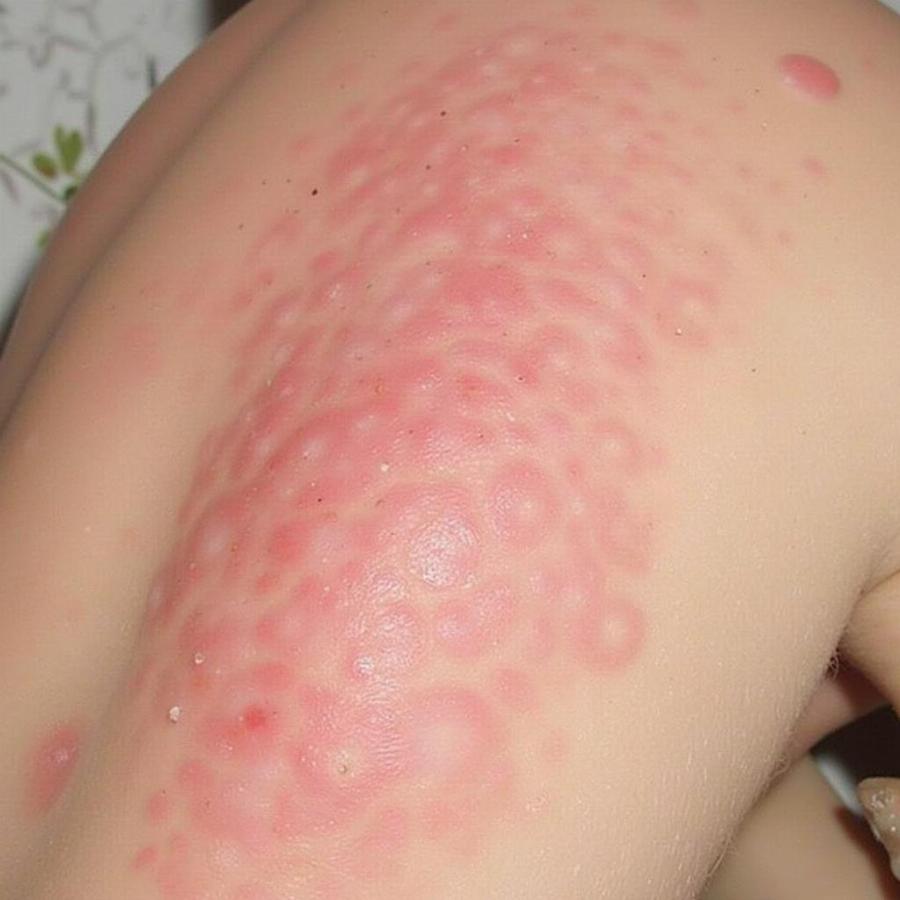Amitraz for dogs is a powerful medication used to treat demodectic and sarcoptic mange, as well as tick infestations. Understanding how to use amitraz safely and effectively is crucial for any pet owner dealing with these parasitic issues. This guide provides in-depth information on amitraz for dogs, covering everything from its uses and application to potential side effects and precautions.
Understanding Amitraz and Its Uses in Dogs
Amitraz works by targeting the nervous system of parasites, effectively killing them. It’s available in various forms, including dips, collars, and sprays. While highly effective, amitraz must be used with caution and under the guidance of a veterinarian. Never attempt to self-treat your dog with amitraz without a proper diagnosis and prescribed dosage.
Demodectic Mange Treatment with Amitraz
Demodectic mange, caused by the Demodex canis mite, is a common skin condition in dogs. Amitraz is often a prescribed treatment for generalized demodectic mange, which covers a large area of the body.
Sarcoptic Mange Treatment with Amitraz
Sarcoptic mange, also known as scabies, is a highly contagious skin disease caused by the Sarcoptes scabiei mite. Amitraz dips are an effective treatment option for this intensely itchy condition.
Tick Control with Amitraz
Amitraz-containing collars can help control tick infestations on dogs. These collars release small amounts of amitraz over time, killing ticks that come into contact with the dog’s skin.
Applying Amitraz to Your Dog: A Step-by-Step Guide
Administering amitraz requires careful attention to detail and strict adherence to your veterinarian’s instructions. Here’s a general guide, but remember to always follow your vet’s specific directions:
- Preparation: Gather all necessary supplies, including the amitraz product, gloves, protective eyewear, and towels.
- Dilution (if necessary): Some amitraz products require dilution. Follow the instructions on the product label precisely.
- Application: Apply the amitraz solution evenly to your dog’s coat, ensuring complete coverage. For dips, fully submerge your dog in the solution. For collars, fasten the collar snugly around your dog’s neck.
- Drying: Allow your dog to air dry in a well-ventilated area, away from children and other pets. Do not towel dry.
- Repeat treatments: Follow your veterinarian’s recommended schedule for repeat treatments.
What Happens After Applying Amitraz?
After applying amitraz, you may observe some temporary side effects in your dog, such as drowsiness, lethargy, or incoordination. These effects usually subside within a few hours.
 Dog After Amitraz Treatment
Dog After Amitraz Treatment
Potential Side Effects and Precautions for Amitraz Use
While generally safe when used correctly, amitraz can cause some side effects. Common side effects include:
- Drowsiness: Your dog may seem more tired than usual.
- Lethargy: A decrease in activity levels is common.
- Incoordination: Your dog may appear clumsy or unsteady on its feet.
- Loss of appetite: Some dogs may experience a temporary decrease in appetite.
When to Contact Your Veterinarian
Contact your veterinarian immediately if your dog experiences any severe side effects, such as vomiting, seizures, or difficulty breathing.
Amitraz for Dogs: FAQs
What is amitraz used for in dogs? Amitraz is primarily used to treat demodectic and sarcoptic mange and to control tick infestations.
How is amitraz administered to dogs? Amitraz comes in dips, collars, and sprays, each with specific application instructions. Always follow your veterinarian’s directions.
Is amitraz safe for all dogs? Amitraz is generally safe when used as directed by a veterinarian. However, it’s not recommended for pregnant or nursing dogs, puppies under four months old, or dogs with certain medical conditions.
What are the common side effects of amitraz in dogs? Common side effects include drowsiness, lethargy, incoordination, and loss of appetite.
What should I do if my dog experiences adverse reactions to amitraz? Contact your veterinarian immediately if your dog experiences any severe side effects.
Conclusion
Amitraz is a valuable tool in the fight against parasitic infestations in dogs. When used responsibly and under the guidance of a veterinarian, it can effectively treat mange and control ticks. Understanding the proper application, potential side effects, and precautions is vital for ensuring your dog’s safety and well-being.
Beaut Dogs: Your Resource for Canine Care
Beaut Dogs is your go-to resource for all things canine, providing reliable and expert information on the world of dogs. We offer a wealth of knowledge on breed characteristics, care needs, and much more. For any assistance, contact us via Email at [email protected] to receive detailed and accurate answers from Beaut Dogs. Visit https://beautdogs.com today to explore the wonderful world of dogs!